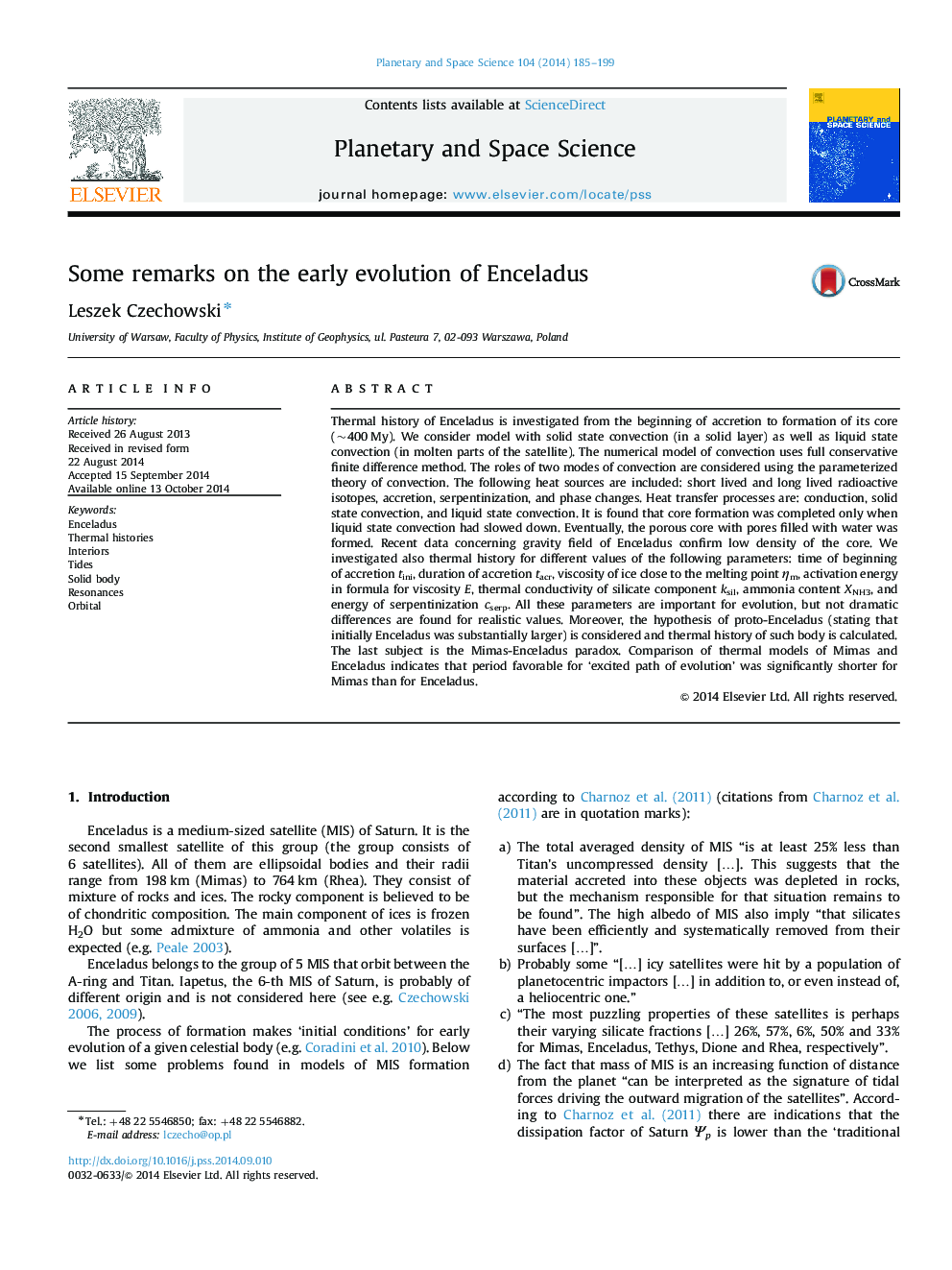| Article ID | Journal | Published Year | Pages | File Type |
|---|---|---|---|---|
| 1781015 | Planetary and Space Science | 2014 | 15 Pages |
•Thermal history of Enceladus for different values of parameters is investigated.•The silicate and permeable core of Enceladus was formed 100–300 My after accretion.•We consider thermal aspect of proto-Enceladus hypothesis.•The Coriolis force could be responsible for the latitude dependent processes.•Late establishing of orbital resonance is responsible for Mimas-Enceladus paradox.
Thermal history of Enceladus is investigated from the beginning of accretion to formation of its core (~400 My). We consider model with solid state convection (in a solid layer) as well as liquid state convection (in molten parts of the satellite). The numerical model of convection uses full conservative finite difference method. The roles of two modes of convection are considered using the parameterized theory of convection. The following heat sources are included: short lived and long lived radioactive isotopes, accretion, serpentinization, and phase changes. Heat transfer processes are: conduction, solid state convection, and liquid state convection. It is found that core formation was completed only when liquid state convection had slowed down. Eventually, the porous core with pores filled with water was formed. Recent data concerning gravity field of Enceladus confirm low density of the core. We investigated also thermal history for different values of the following parameters: time of beginning of accretion tini, duration of accretion tacr, viscosity of ice close to the melting point ηm, activation energy in formula for viscosity E, thermal conductivity of silicate component ksil, ammonia content XNH3, and energy of serpentinization cserp. All these parameters are important for evolution, but not dramatic differences are found for realistic values. Moreover, the hypothesis of proto-Enceladus (stating that initially Enceladus was substantially larger) is considered and thermal history of such body is calculated. The last subject is the Mimas-Enceladus paradox. Comparison of thermal models of Mimas and Enceladus indicates that period favorable for ‘excited path of evolution’ was significantly shorter for Mimas than for Enceladus.
